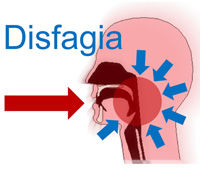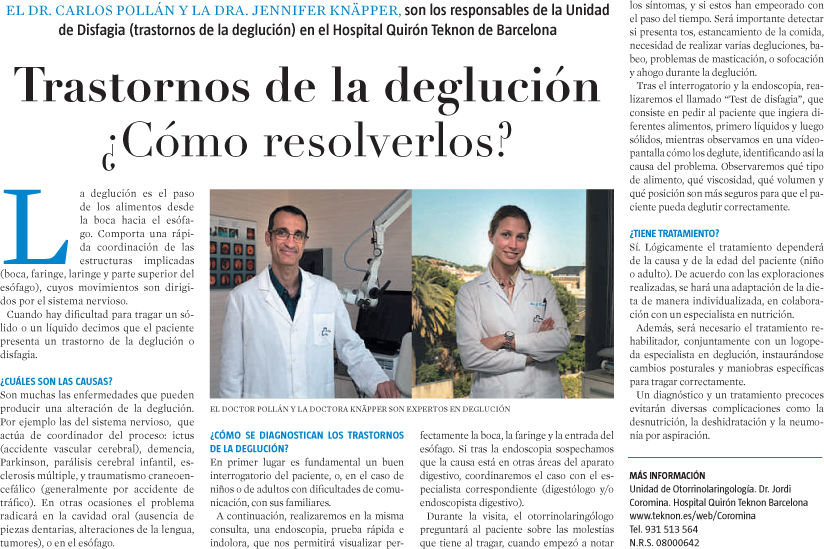Dysphagia disorders. How to resolve them
SWALLOWING INVOLVES THE COORDINATION OF VARIOUS STRUCTURES AND MUSCLES


SWALLOWING AND DYSPHAGIA
What is dysphagia?
Swallowing or deglutition, is the process allowing foods to pass from the mouth to the pharynx and then the oesophagus. The process of swallowing food involves fast coordination between the muscles and structures involved in the process, where multiple motor functions are performed, voluntarily and involuntarily controlled by the nervous system.
Dysphagia (difficulty swallowing) is when a structure involved in the swallowing process does not work correctly.
People affected by dysphagia find it impossible or difficult to swallow foods or liquids, and have a sensation of the food remaining lodged in the mouth or throat.
In many cases, the onset and progression of dysphagia is so gradual that some patients do not pay any attention to their difficulty in swallowing, which worsens over time. This is why it is important to diagnose dysphagia early on and start treating it as soon as possible.
Types of dysphagia
- oropharyngeal dysphagia is when dysfunction affects the pharynx. In this case, difficulty is experienced at the start of the swallowing process, causing air to be inhaled into the windpipe (trachea) and resultant coughing, vomiting, pain, a sensation of pressure or tightness when swallowing, heartburn and regurgitation.
- oesophageal dysphagia is when the dysfunction affects the oesophagus.
What causes dysphagia?
- diseases of the pharynx or oral cavities (tonsillitis, pharyngitis or fungal infections and sores)
- diseases of the oesophagus (oesophageal diverticulum, achalasia).
- neurodegenerative diseases (multiple sclerosis, Parkinson’s)
- diaphragmatic hernia (hiatal hernia)
- swallowing of foreign bodies
- dementia
- others: oesophageal neoplasms, cancer of the oesophagus, neurological diseases or stroke
How is dysphagia diagnosed?
Firstly, it is essential to review the patient’s medical history. If dysphagia is suspected, the specialist will carry out an endoscopic examination, followed DOESby a dysphagia test.
During the consultation, the ENT specialist will ask the patient about their discomfort or difficulty swallowing, their dietary habits, when they started to notice symptoms and whether they have progressed over time. The patient should inform the specialist of all of their symptoms, even if they think they may be unrelated to the disease.
After examining the mouth and the pharynx, a dysphagia test will be performed, also known as the volume-viscosity swallow test (V-VST). The test measures the volumes and consistencies of the most appropriate foodstuffs for each patient.
How is dysphagia treated?
Dysphagia (difficulty in swallowing) require personalised treatment according to the patient’s medical history and the cause of the disease.
The treatment involves effecting changes to positional manoeuvres and progressive training with different textures aimed at reducing discomfort and restoring reflexes, such as the swallowing and cough reflex.
Article on “Swallowing Disorders”. La Vanguardia (25/06/2014)

 by Develona
by Develona